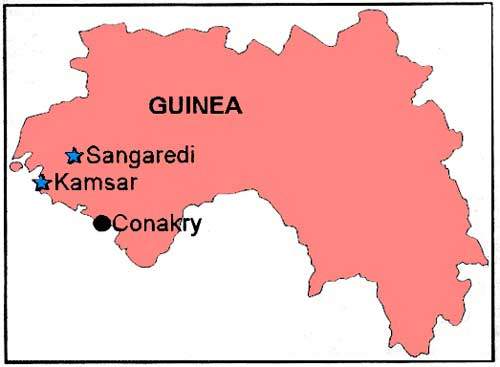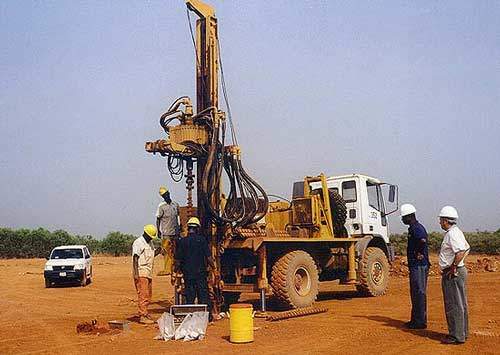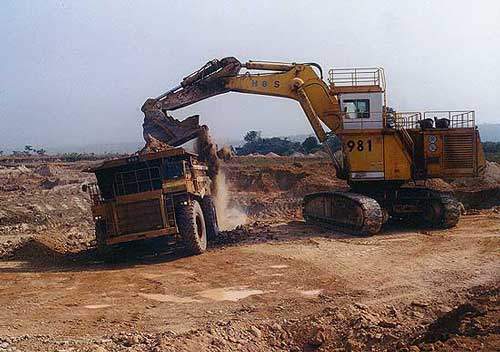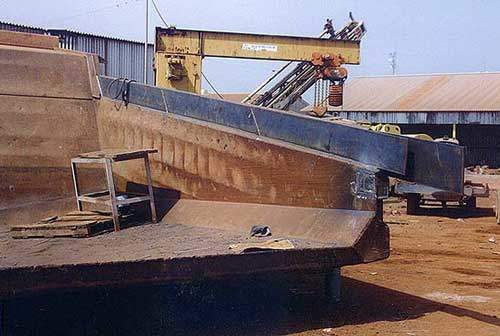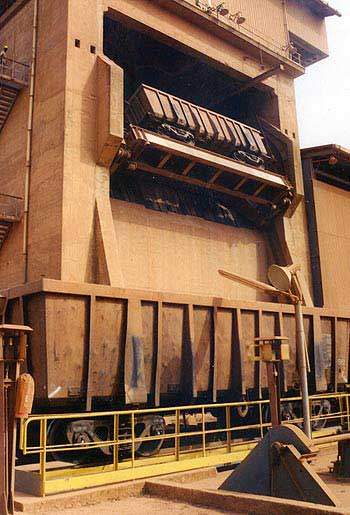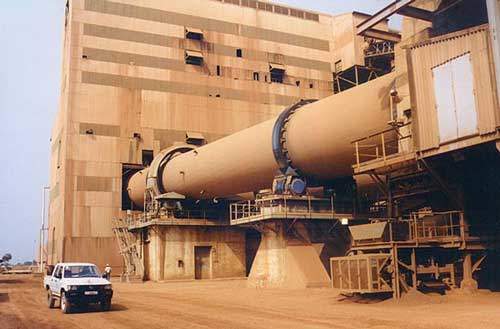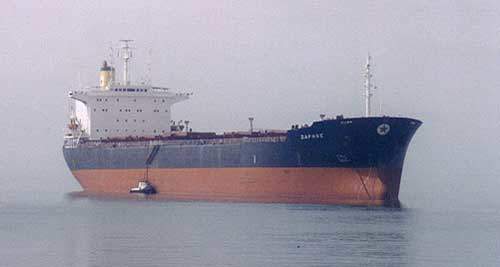The largest single producer of bauxite (aluminium ore) in the world, Cie des Bauxites de Guinée’s (CBG) operations are located in the west of Guinea, close to the border with Guinea-Bissau. Since opening in 1973, the operations produced over 260Mt of bauxite for export.
CBG was established in the early 1970s as a 49:51% joint venture between the Guinean government and the Halco partnership, originally comprising a group of international aluminium industry participants. Since 2004, Alcoa and Rio Tinto Alcan have each had a 45% stake in Halco, having gradually bought out most of the other founder members. In mid-1999, the government invited Alcoa to take over management of the project.
The operations consist of the Kamsar bauxite treatment plant on the West African coast, and a group of open pit mines located 100km inland, centred on the community of Sangarédi. Mine production rose from 12.2Mt in 2001 to just over 14Mt in 2005, with 11.5Mt/y to 12.5Mt/y of bauxite products being shipped from Kamsar. The operation is facing reducing ore grades as high-grade material is mined out.
In 2006, Halco reached an agreement with the Guinean Government over the development of a 1.5Mtpa alumina refinery at Kamsar. The original agreement, which was set to expire in November 2008, was extended to November 2012. Alcoa and Rio Tinto Alcan completed the pre-feasibility study in 2008. The commissioning date as per the previous original agreement was scheduled for 2009, with a price tag of at least US$1bn. The same has been rescheduled for 2012. The refinery will have a provision for capacity expansion of up to 4.5Mtpa.
Geology and reserves
Bauxite deposits are found across much of western and central Guinea, having been formed by the tropical weathering of underlying, aluminium-rich rocks. The deposits are typically close to the surface. Proven reserves total some 2,300Mt with additional probable reserves of 18,600Mt, most of which contains between 40% and 50% aluminium oxide (Al2O3).
CBG’s operations are based on three main ore zones – Sangarédi, Bidikoum and Silidara, with further resources at the N’danga, Boundou Waade and Paravi deposits. Each deposit contains several different types of ore, varying in both grade and physical properties.
Its existing resource totals over 300Mt grading 51% Al2O3, sufficient to support production at current rates for at least 25 years. Historically, grades in Sangarédi have been 56–58% Al2O3, while ore in Bidikoum averages 50% and Silidara 52%.
In 2006, CBG signed an agreement with the Guinean government and Global Alumina over granting Global Alumina access to some of the CBG bauxite reserve areas. In return, CBG will have future access to some 2,000Mt of bauxite resource that lie outwith its current concession.
Open pit mining
While Sangarédi was the orebody on which CBG’s operations were founded, today between 85% and 90% of its output of raw bauxite comes from the Bidikoum and Silidara pits. After stripping any thin overburden, the ore is blasted and then loaded using hydraulic excavators into haul trucks for transport to the mine stockpiles.
Bench heights of up to 8m allow most of the ore to be mined in one horizontal pass. The mining fleet consists of Demag H185 excavators, Caterpillar 992C and 992D wheel loaders, and 17 Caterpillar 777B and 777D trucks.
Run-of-mine ore is stockpiled in long piles that run parallel to the mine’s rail sidings, with material from the different pits being tipped in layers to give a consistent blend. The stockpiles are then reclaimed using Caterpillar 992s that dump directly into rail wagons alongside.
About two hours is needed to load each 100-wagon train, each car carrying around 82t of bauxite. Five or six trains carry ore from the mine to Kamsar each day.
Bauxite processing
Treatment of the run-of-mine bauxite consists mainly of crushing and drying before shipment. Ore wagons are tipped individually, the material being crushed to –100mm before stockpiling. After reclaim using bucket-wheel stacker-reclaimers, the ore is dried from an average of 12.5% moisture to 6.7% for shipping.
Dried ore is held in a 150,000t-capacity covered stockpile, and is then reclaimed for transport along the plant’s 1.6km jetty to the shiploaders.
The jetty can handle Panamax-sized vessels of up to 60,000dwt, with around 230 such shipments of metallurgical-grade bauxite scheduled per year. In addition, CBG exports low monohydrate and small amounts of calcined bauxite, and has to import all its fuel and equipment spares through its own port facilities.
Alcoa has made substantial investments in the rehabilitation of the Kamsar plant, including new belt conveyors and dust-control systems, with the aim of increasing its export capacity to 13.5Mt/y of bauxite products.

